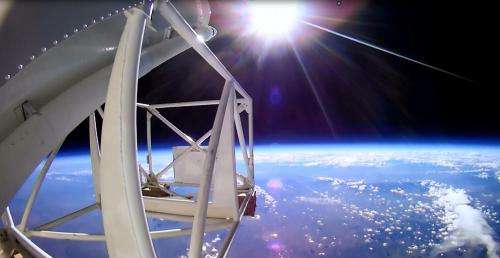Ballooning offers platform for performing research in a space-like environment

New discoveries are being made on an annual basis by researchers flying their instruments on a high-altitude balloon platform. Ease of access to ballooning, relatively low cost and the potential for quick turn-around response times create a large appeal for using this platform to perform novel science and to train new scientists. This appeal is reinforced by the availability of a range of balloon sizes to accommodate various payload types, multiple launch sites (for shorter and longer duration flights), and more sophisticated gondolas.
Since the 1950s, and the invention of the 'natural' shaped polyethylene balloon, there has been a surge in the quality and amount of science being performed on this platform. The flexibility, reliability and relatively low-cost of the high-altitude balloon platform, over that of a satellite, makes for an attractive means of carrying out novel science in a space-like environment across multiple disciplines, which include: high-energy astrophysics (particle, x-ray and gamma-ray), IR/sub-mm (CMB to planetary), heliophysics, geospace and atmospheric research.
Existing balloons are capable of carrying large payloads to high altitudes for flight durations lasting tens of days. The longest flight to date was that of SuperTIGER in 2012-2013 on a vented zero-pressure balloon. This payload weighed 2,025 kg (not including flight straps) and flew to a maximum altitude of ~39.6 km. The entire flight lasted for just over 55 days. The development of the Super-Pressure Balloon holds promise for achieving even longer flights launching from Antarctica (> 100 days), and Long Duration Balloon flights from mid-latitude launch sites. This capability, combined with improved payload pointing, light-weight gondolas and more sophisticated instrumentation will enable scientists to make new discoveries and develop novel instrumentation suitable for orbital missions. This platform will also continue to provide a training ground for the next generation of scientists and engineers.
Provided by World Scientific Publishing




















